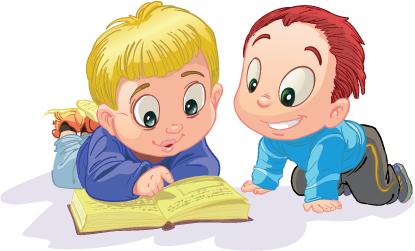The Kindergarten Curriculum Rubric is created as a continuum of physical developmental skills in 5 areas in a play-based kindergarten class. It uses “emerging skill,” developing skill,” and “applying skill” terminology to guide understanding of how the skill develops along a continuum.
The 5 areas (detailed below) are:
Self Care (dressing, eating, toileting)
Playground Skills (swings, slides, balance activities, climbers)
Centre Activities (painting, play-dough, building, sand/water/rice/beans, puzzles)
Scissor Skills
Pencil Skills (pencil grip, colouring, drawing, pre-printing forms, letter/number formation)

 Self-Care
Self-Care
| ASPECT | EMERGING | DEVELOPING | PROFICIENT |
|---|---|---|---|
| DRESSING | Can undress upper and lower body clothing, can put on pullover clothing with occasional assistance to orient correctly, puts on pants except fasteners, can undo and do up large buttons, can zip up jacket when zipper is engaged and can fasten some snaps. Can put on slip on shoes and socks. May require prompts for dressing routine. If Not, Try These Activities: | Orients clothing appropriately at all times (e.g. jacket right side up and shoes on correct foot with tongue in place). Can tie and untie a knot, can fasten buttons, can insert zipper into shank and fasten zipper. No prompts required during dressing routine. Activities to Build Skills for Dressing: | Independent except with clothing selection. Occasional difficulty with difficult fasteners, such as belts. Tying shoe laces typically occurs between 6 and 7 years of age. |
| EATING | Can use a spoon and fork and cup without a lid with occasional spilling. Can remove plastic lids or screw-top lids with occasional assistance. Requires assistance with food packages. Activities to Build Self-Feeding Skills: | Can open thin paper/plastic food packages but requires assistance for metal containers. Requires occasional assistance with tightly closed screw-top lids. If Not, Try These Activities: | Independent with eating. Can open most food packages. |
| TOILETING | Has daytime and nighttime control. May need help to wipe self and manage clothing fasteners. May require prompts for toileting routine. | May only require assistance with tough fasteners (e.g. belts or tough buttons). Activities To Build Skills for Fasteners: | Fully independent |
top

 Playground Skills
Playground Skills
| ASPECT | EMERGING | DEVELOPING | PROFICIENT |
|---|---|---|---|
| SWINGS | Able to get on the swing but requires an adult to push. If Not, Try These Activities: | Able to get on the swing and will attempt to use both arms to pump/push the chains and kick with their legs, however, requires an adult to push the swing. If Not, Try These Activities: | Able to get on the swing and use both arms and legs to “pump” the swing forward. If Not, Try These Activities: |
| SLIDES | May go up and down the stairs marking time (2 feet per step). Will go down the slide lying on their stomach with feet first. If Not, Try These Activities: | Will go up and down the stairs with alternating feet and go down the slide on their back with feet first. If Not, Try These Activities: | Able to go down the slide in a seated position with feet first. Will experiment with walking up the slide. If Not, Try These Activities: |
| BALANCE ACTIVITIES (BEAMS /LILYPADS /STEPPING STONES) | May be able to hop on one foot. Will be able to walk forward on a 1 foot rise. May be able to hop on one foot. Able to step from one surface to another (stepping stones) while holding onto a railing and adult support. If Not, Try These Activities: | Able to balance on one foot for 10 seconds. Will walk backwards on a 1 ft rise. Able to step from one surface to another with support from a railing. If Not, Try These Activities: | Able to balance on one foot for 15-30 seconds. Able to jump over 1 ft obstacles independently. Able to step from one surface to another (such as stepping stones) independently without supports to hold onto. If Not, Try These Activities: |
| CLIMBERS/ MONKEY BARS | Will reach for the bars, however, requires an adult to hold onto them. If Not, Try These Activities: | Will reach up and hang onto the bars for a few seconds then will drop. If Not, Try These Activities: | Able to do a short set of bars (3-4) independently, 1 rung at a time. |
top

 Centre Activities
Centre Activities
| ASPECT | EMERGING | DEVELOPING | PROFICIENT |
|---|---|---|---|
| PAINTING | Whole hand grasp of large paintbrush; whole hand or index fingers used for finger-painting; random strokes and colour use. If not, try these activities:
|
Varies grasp of brush or other implements – can hold Q-tip to paint; Designs start to represent reality. If not, try these activities: |
Good control of paintbrush; Paintings are recognizable and often involve several items and an indication of background of environment. If not, try these activities: |
| PLAY-DOUGH | Limited ideas, uses 2 hands to squish or pull apart dough. If not, try these activities: | Can use a rolling pin and cookie cutters, a plastic knife and other basic tools; Can roll a ball, sausage, pinch with fingers and thumb, cut with scissors. If not, try these activities: |
Can model(copying examples) letters and animals. If not, try these activities: |
| BUILDING (LEGO AND OTHER BLOCKS) | Makes simple products with large pieces (eg: wooden blocks, foam pieces, Duplo), takes apart pieces using whole hand actions, design evident. If not, try these activities: | Makes more complex structures using smaller pieces (eg: Bristle Blocks, free blocks, construction straws), specific designs evident, builds complex structures by using a wider variety of hand actions (pincer, tripod and lateral grasp patterns with both hands to orientate pieces accurately). If not, try these activities: | Makes recognizable products that replicate reality, likes small construction materials (eg: Kinnex, Lego), attends to detail, able to move small pieces around within each hand to orient accurately. If not, try these activities: |
| SAND/ WATER/ RICE/ BEANS | Pouring, emptying, feeling with fingers, moving objects through the sand/water. If not, try these activities:
|
Using a wider variety of toys and objects to manipulate the sand/water. If not, try these activities: |
More complex play focusing on other toys moving in the sand/water. If not, try these activities: |
| BUILDING (LEGO AND OTHER BLOCKS) | Completes inset puzzles (with knobs or without). If not, try these activities: | Puzzles in a frame – with or without design drawn on the board. If not, try these activities: | Jigsaw puzzles – design not on the board – 25 pieces without a frame. If not, try these activities: |
top
 Scissor Skills
Scissor Skills
| ASPECT | EMERGING | DEVELOPING | PROFICIENT |
|---|---|---|---|
| May still switch scissors between hands; varied grasp (thumbs down); may be unsure how to orient fingers/hand on scissors; able to snip paper however demonstrates difficulty managing forward movement of scissors on paper.Winging of elbow when snipping/cutting; cutting may occur at an awkward angle; helper hand engaged but may look awkward. May be able to cut along short lines but has difficulty managing longer lines & simple shapes; may display some resistance to cutting activities. If Not, Try These Activities: | Dominant cutting hand established; may require reminder to orient hand on scissors in thumbs up position; elbow settles down by side and cutting occurs in front of child; able to cut along lines of varying lengths & simple shapes (cut around corners, curves, circles, squares & triangles) as long as they are large. Has some difficulty managing complex shapes but is interested in doing so. If Not, Try These Activities: | Cutting hand firmly established; consistently holds scissors thumbs up and orients hand in scissors easily; uses helper hand effortlessly to negotiate simple shapes; ability to cut complex shapes emerging; eager to engage in cutting activities. If Not, Try These Activities: |
top
 Pencil Skills
Pencil Skills
| ASPECT | EMERGING | DEVELOPING | PROFICIENT |
|---|---|---|---|
| PENCIL GRIP | Fisted pencil grasp or other whole hand grasp – whole arm movement; not stabilizing paper with helper hand. Hand dominance unclear. If Not, Try These Activities:
|
Functional pencil grasp with whole hand movement. Arm stays on table; helping hand engaged; established hand dominance. If Not, Try These Activities: | Functional pencil grasp (with dynamic finger movement; adequate hand and finger strength). |
| COLOURING | Using one colour; random contact with paper; scribbling. If Not, Try These Activities:
|
Using more than one colour; vertical, horizontal strokes; turns page to try to stay in lines. If Not, Try These Activities: | Using multiple colours; using horizontal, vertical, circular strokes; paper stays still; colour mostly within lines. |
| DRAWING | Moves from disordered scribbling to ordered scribbling to scribble is ‘named’ – e.g. “This is a dog”. If not, try these activities: | Draws 2 part person- Head with either legs or arms. Teach Mat Man from Learning without Tears, information linked here. | Draws person with head, body, legs, arms, hands, feet and facial features. Spontaneously produces drawings with detail. |
| PRE PRINTING | Imitates (adult demonstrates) vertical line, horizontal line, circle, cross, square, /, \, X, △ If Not, Try These Activities:
|
Copies (without adult demonstration)vertical line, horizontal line, circle, cross, square, /, \, X, △ | Draws (independently, without a model) vertical line, horizontal line, circle, cross, square, /, \ X and copies a △. |
| LETTER FORMATION/ NUMBER FORMATION | Letter/number recognition occurring; letters are “drawn” instead of printed. Most are formed bottom to top, poor sizing, poor spacing and floating. May or may not know L→R direction. Mixing and reversals of upper/lowercase and numbers may be occurring. If Not, Try These Activities: | Letter/number recognition continues. Letters/numbers are formed top to bottom, left to right – by imitation. imitation (adult demonstration). Sizing, spacing and sitting on bottom line (baseline orientation) is inconsistent. If Not, Try These Activities: | Most letters/numbers are recognized. Uppercase Letters/numbers are formed top to bottom, left to right with good size, spacing and sitting on bottom line (baseline orientation) from copy. |


